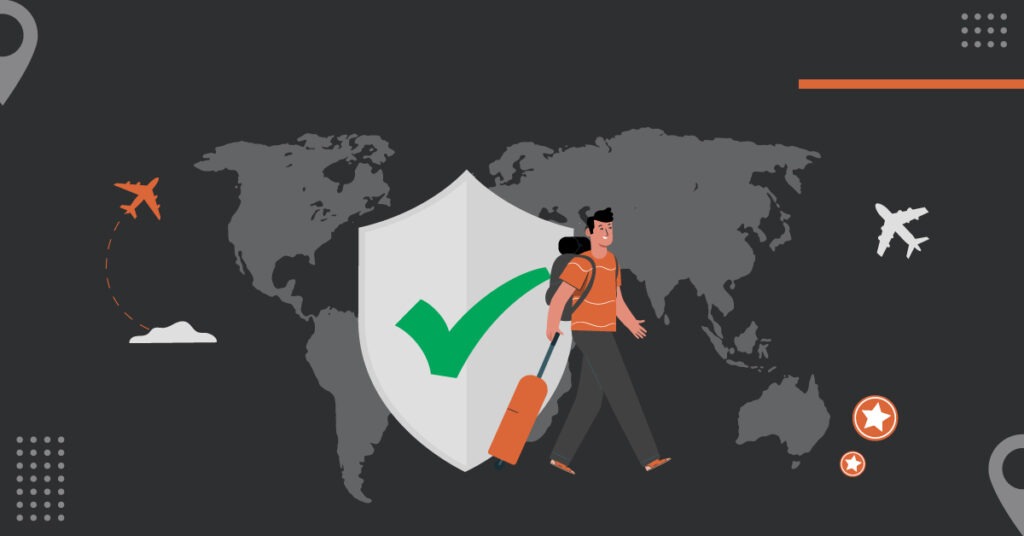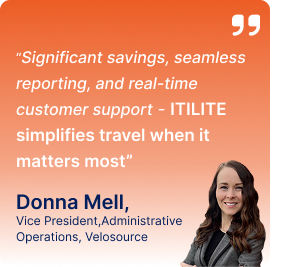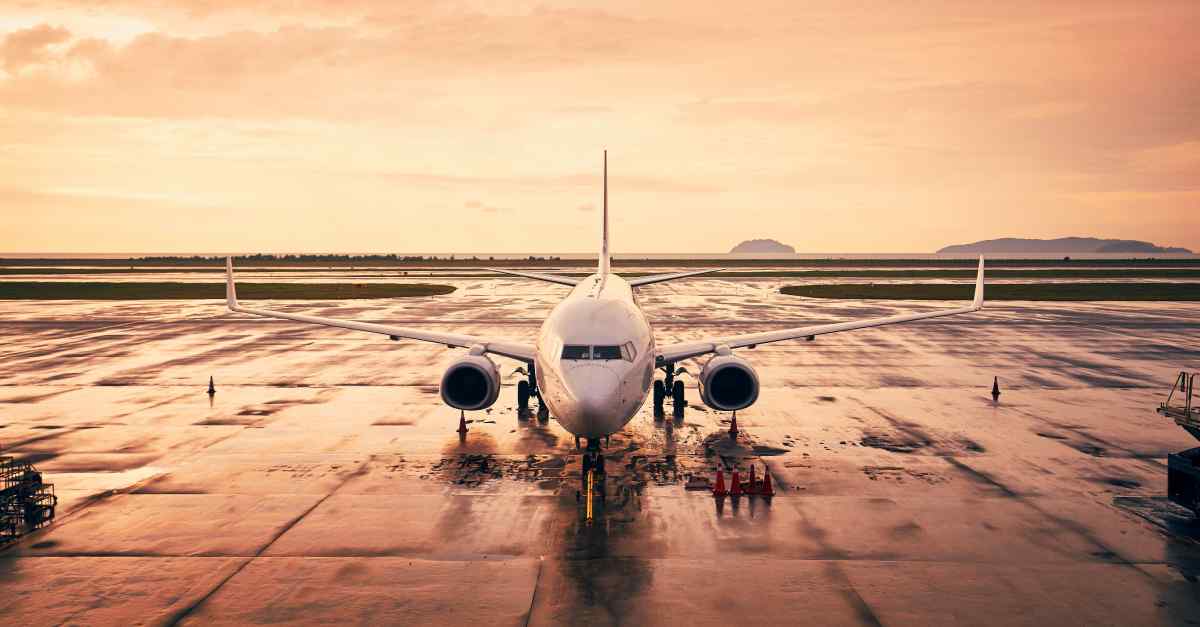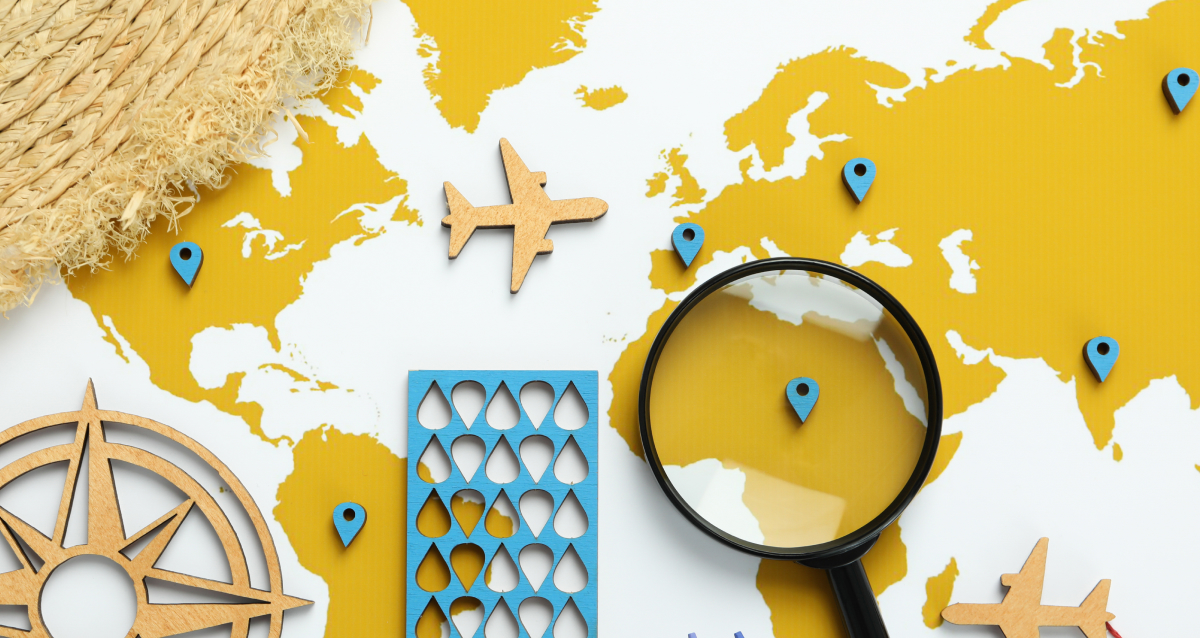
The results of a survey showed that most Americans don’t feel safe when they travel, both domestically and internationally. On a scale of 0 to 100 (with 0 being extremely unsafe), the domestic travel safety score is 34, whereas the international score is even lower at 22.
When personal safety is at risk, it becomes difficult to accomplish business goals properly. Moreover, companies have a duty and legal responsibility to protect their employees when they send them on work trips. Therefore, organizations must take all measures to mitigate any risks and ensure the safety of their business travelers.
Implement the following 14 steps to ensure corporate travel safety for your employees.
Before the Trip:
1. Have a Travel Safety Policy
Employers are responsible for mitigating the risk that business travelers face while they are on a trip. Therefore, there needs to be standard protocols and procedures that employees must follow in order to ensure traveler safety.
A corporate travel safety policy is a documentation of all the training, protocols, travel advisory, and resources that the company must implement in its business travel management program. Additionally, the policy also includes:
- Risk assessments of countries
- Information on customs
- Instructions for ensuring traveler safety during the commute
- Instructions for finding health support during emergencies
- Necessary travel documents
- Packing guidelines
It is imperative that all employees refer to their company’s corporate travel safety policy to ensure a secure business journey. Furthermore, it is the company’s responsibility to keep the policy updated with current information to prevent any outdated information from being accessed.
2. Conduct Pre-Trip Risk Assessment
A pre-trip risk assessment is conducted to identify and estimate the risks a business traveler may face during their trip. This is done to develop business travel safety tips and strategies that will minimize or eliminate risky situations for the traveler.
The magnitude of risk faced by each traveler for a particular trip is different due to differences in age, gender, and other health concerns. Therefore, it’s necessary to communicate the risks with your traveler beforehand so they are aware and can discuss their views and concerns regarding the same.
Some major risks to be analyzed before an employee goes on a business trip are:
- Security-associated risks (civil unrest, unpredictable local laws, the crime rate of the city, hotel security, traveler awareness of security policy, etc.)
- Traveler health and fitness (medical conditions, fitness level, whether an employee can travel for long durations, accessibility to medical support, etc.)
- Environmental concerns (weather disruptions, climate-related allergies to travelers, natural disaster risks, etc.)
- Transportation risks (road conditions, traveler awareness of driving in a particular location and driving license requirements, etc.)
- Gender-related concerns (whether the trip itinerary is safe for female travelers)
To help you better analyze trip-related risks, we have created a travel risk assessment checklist. It contains essential questions about the destination, health, emergency training, and data security. You can ask your employees to fill out the checklist and conduct a thorough risk assessment based on their answers.
To download your copy, click below.
Get Free Traveler Risk Assessment Checklist
3. Educate your Travelers
When it comes to business travel safety, simply sending a corporate travel safety tips document to your employees is not enough. They may not understand it or may skip over important sections. Therefore, educating your travelers about safety protocols and policies is essential. For example, hotel security tips could include: checking for emergency exits in the hotel, using a portable lock on the door, checking for any cameras in the room, etc.
You can conduct training sessions, share demonstration videos, and have discussions about employee safety before sending your employees for a business trip. This will ensure that the safety protocols are communicated clearly.
4. Provide Corporate Travel Safety Training
As a travel manager, you should primarily train your employees to avoid any potentially risky situation. However, in case they face any threats, they should be well prepared to make the best safety decision at that time. Safety training helps employees gain situational awareness and learn how to react in cases of an emergency, such as a natural disaster, accident, or civil instability.
One of the techniques of traveler safety training is the SLAM technique. It consists of 4 steps that are:
- Stop – Stop what you are doing
- Look – Observe potential risks around you
- Assess – Analyze how risky the situation is
- Manage – Fix the situation by stopping the task you are doing or removing the hazard.
Another way to help employees sharpen their decision-making skills is by presenting them with a mock dangerous situation and asking them what their next steps would be. This challenges them to think quickly and critically about the best course of action to take, and afterward, you can debrief with them to see if they took the right decision and inform them of what the best steps to take would actually be in such circumstances.
There are a variety of training methods you can use to better equip your employees, depending on the situation you want them to be able to handle. Situational awareness exercises, for example, will help increase their assessment and interpretation abilities so they can deal with risk more effectively.
5. Provide your Employees with Traveler Safety Checklist
A travel safety checklist helps your employee go through essential corporate travel safety tips to ensure their safety before they leave for their business trip.
A few key points of the checklist are:
- Travel Insurance
- Ground commute safety guidelines (e.g., driving rental cars)
- Backup of travel documents
- Protocol to find emergency healthcare
- List of safety-related items to pack
- Emergency contact numbers
- Validity of Passport
- A sufficient supply of necessary medication
- Any travel warnings for the destination
6. Arrange Business Travel Insurance for Travelers
Business travel insurance is vital for protecting business travelers from any potential loss or damage they might face while on their trip. Some commonly covered categories include flight cancellations or significant delays, accidental medical expenses, loss of check-in baggage, theft, emergency evacuation cost, and legal liabilities.
Some travel insurance programs also come with 24/7 worldwide assistance and emergency medical evacuation, making them an even more valuable resource for business travelers. As a result, travel managers are increasingly leveraging these benefits and outsourcing these services to ensure business travel safety while their employees are away on business trips.
Ultimately, travel insurance gives business travelers the peace of mind that their losses will be compensated for, allowing them to focus on their business trips.
7. Make your Travelers Aware of Cybercrime
Cybercrime is a major corporate travel safety hazard in today’s society. At the airport or any public location, hackers can easily set up fake public WiFi such as “Airport Wifi” and get access to any device when travelers connect with it. Hence, it is crucial to educate your employees regarding the consequences of using unsecured WiFi and what to opt for instead.
Some major dangers of using public WiFi are:
- Theft of bank account details
- Theft of credit card numbers
- Theft of usernames and passwords
- Malware infection of your laptop
- Access to your online activities
Instead of using public WiFi, business travelers can carry a portable hotspot with them to gain secure internet access. However, if they think they may need access to public WiFi and do not have a portable hotspot, they can install a trusted VPN before the trip. It will help them encrypt their connection when they access the internet.
Additionally, ask travelers to avoid updating their whereabouts or pictures of their boarding pass on social media.
8. Encourage Employees to Take Health Precautions
Business travelers are prone to face health-related issues due to changes in the environment, geography, local infections, and travel sickness. Therefore, travel managers should encourage travelers to take adequate precautions while traveling, such as:
- Avoid drinking tap water
- Avoid sea-food and meat
- Avoid meals at buffets
- Get vaccinated against any prevalent diseases
- Carry an insect repellent
- Carry a first-aid kit
- Sleep well to avoid jetlag
- Take supplements if required
- Stay hydrated
9. Provide your Travelers with Emergency Contact Numbers
Quick and proper communication is essential in case of an emergency. Hence, you must equip your travelers with contacts such as International SOS, the country’s embassy, local emergency number, and 24/7 assistance number to ensure safety of corporate travelers.
During the Trip
10. Live-Track your Travelers
There are many GPS-tracking travel software applications available that allow you to track the location of your employees in real time.
Live location tracking can be a highly beneficial corporate travel safety measure when your traveler faces a safety concern. You can immediately view their location and provide the necessary support after they have communicated their issue to you. Additionally, you can prevent them from going through unsafe areas if they deviate from their intended route. This way, you can ensure travelers’ safety while they’re on the road.
However, it is important to use this feature responsibly and not use it for excessive surveillance. To maintain trust with your employees, it is crucial that you let them know that you will be tracking them.
11. Send Real-time Updates and Alerts
Sending live updates and alerts is crucial for keeping travelers safe. By receiving alerts about local news, weather disruptions, civil unrest, and natural disasters, travelers can plan their remaining trips accordingly and make sure they stay safe.
12. Provide Round-the-Clock Travel Support
Business travelers can often face challenges while they are on the road and may need immediate assistance. Some examples could include: delayed or canceled flights, problems with hotel reservations, or lost luggage. In such cases, it is imperative for travelers to get in touch with a helpline so that they can resolve their issues as soon as possible and not compromise their remaining trips.
However, in-house employees of organizations usually cannot deal with such a large number of queries or provide late-night travel support. Therefore, to provide round-the-clock travel support, organizations can partner with travel management companies that have a dedicated professional travel support team. These teams are available to provide quick assistance over call, message, and email, enabling employees to get out of an uneasy situation.
Calculate your savings now!
After the Trip
13. Collect Trip Feedback
Surveying employees post-trip is an effective way to identify what areas of the trip could be improved for next time. For example, if an employee felt unsafe at their hotel or was unsatisfied with their in-flight experience, those vendors can be crossed off the list for future bookings. Ultimately, feedbacks help you optimize your corporate travel safety program.
14. Perform Health Checkups
Assessing the employee’s medical condition after the trip will help determine if there were any adverse health effects as a result of the trip. Fatigue and vitamin deficiencies can be treated relatively easily and usually aren’t cause for alarm. However, more serious illnesses, such as viral transmissions, need to be given proper medical attention, and the employee needs to be quarantined to prevent the further spread of the disease. Hence, performing regular health checkups is essential to ensuring travel safety.
Ensure Corporate Travel Safety with these Steps
As a travel manager, you want to ensure that you protect your employees while they are on the road. Although no travel plan is foolproof, you can use the above mentioned corporate travel safety tips to make your employee travel safer. With some planning, preparation, and foresight, you can prevent any unforeseen incidents from happening on business trips.
You can implement these steps with the help of ITILITE corporate travel management software. The platform allows you to track your travelers in real time and block unsafe hotels and destinations. We also provide trip updates, 24/7 multi-channel travel support, and immediate assistance in under 30 seconds so your employees feel safe while traveling.
Get a free demo of ITILITE to experience the safety benefits and more.







